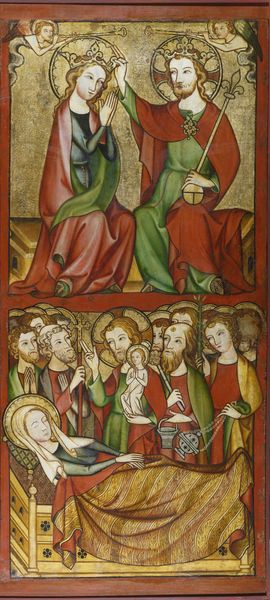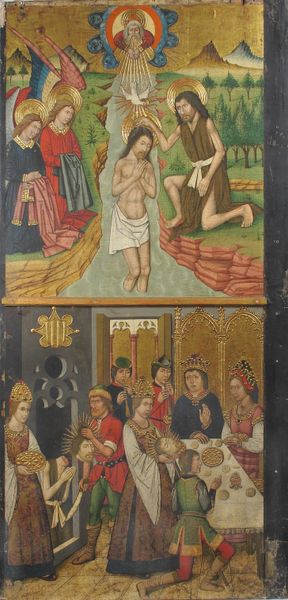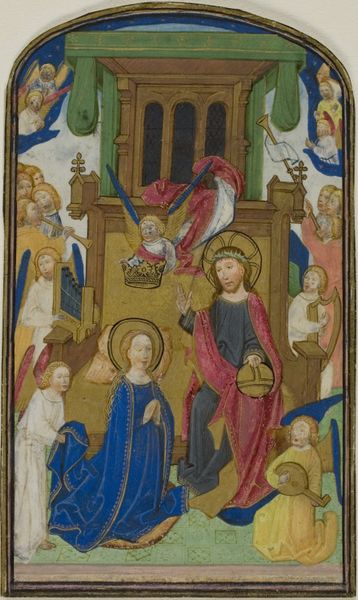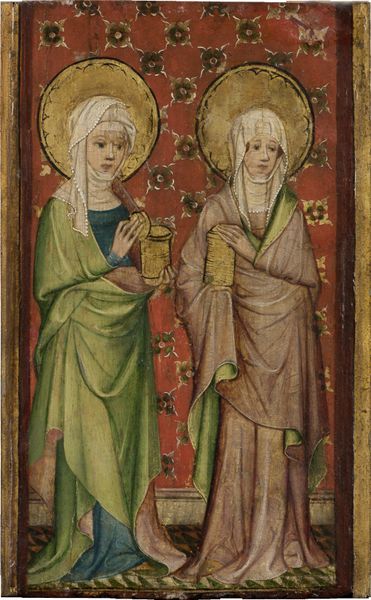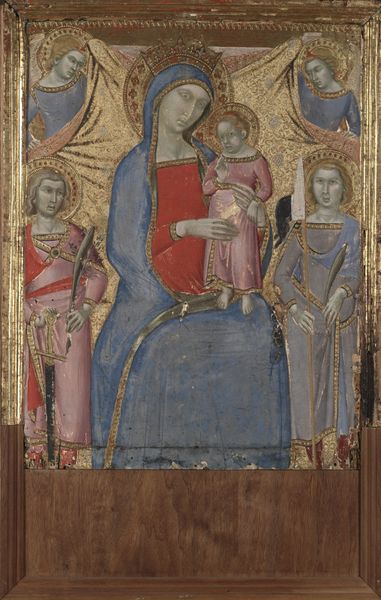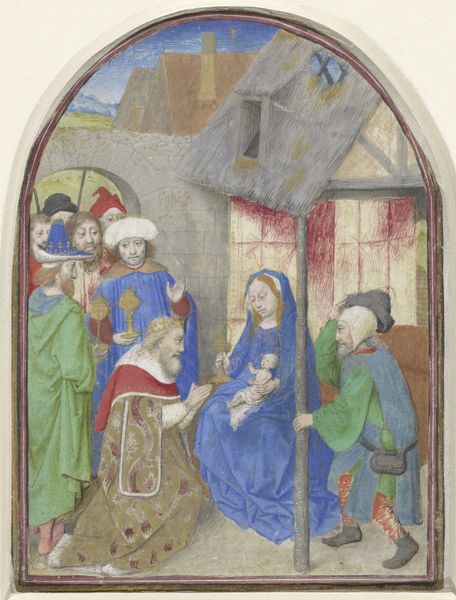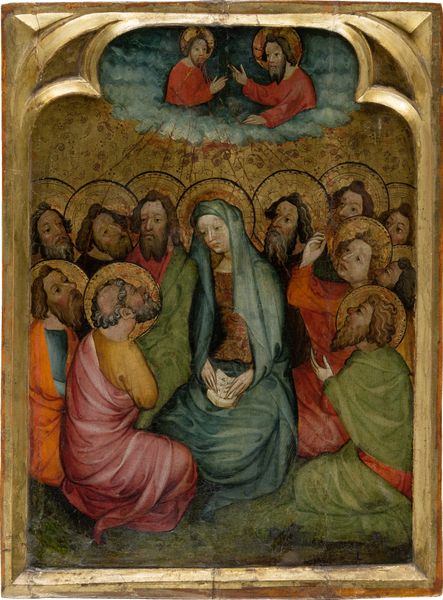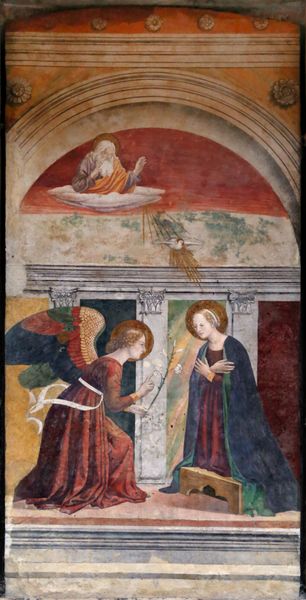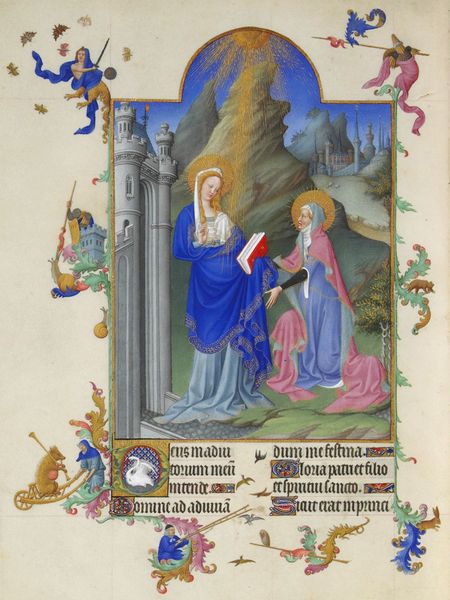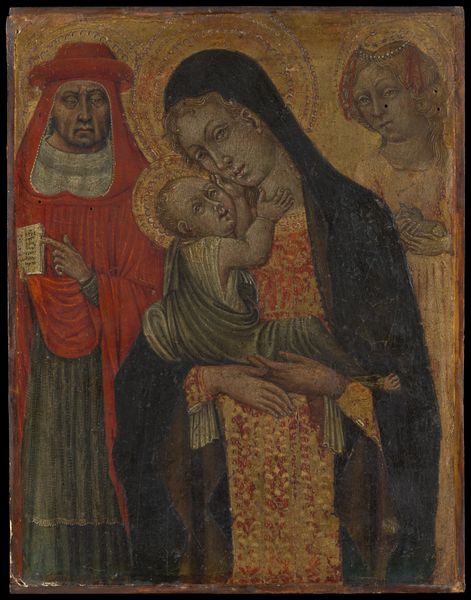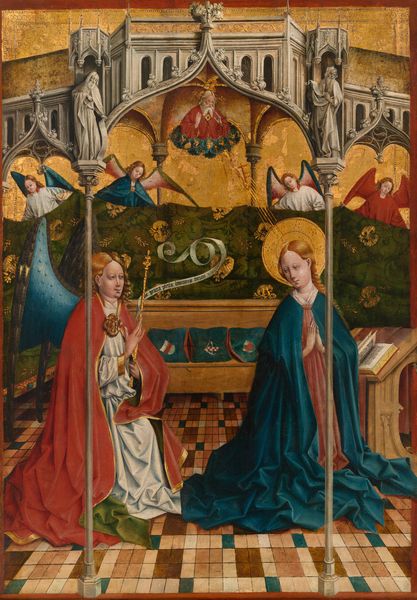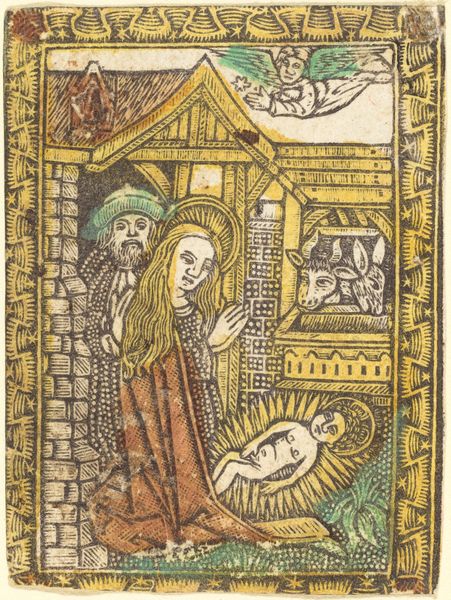
tempera, painting, wood
#
portrait
#
woman
#
medieval
#
narrative-art
#
animal
#
tempera
#
painting
#
gothic
#
oil painting
#
child
#
naive art
#
wood
#
history-painting
#
angel
Dimensions: 153.7 x 118.8 x min. 2.9 cm
Copyright: Public Domain
Curator: The work before us, tempera on wood, dating from 1325 to 1335, is titled “Annunciation and Nativity.” It's attributed to an anonymous artist, now held in the collection of the Städel Museum. My immediate impression is that the dual scenes, one above the other, give it the feeling of a medieval illuminated manuscript page blown up to a larger scale. Editor: It feels incredibly intimate, even naive, but it evokes a tenderness. The rendering of the figures, almost doll-like, gives a soft, nurturing impression. Curator: The dual scenes compress time, don't they? Above, we see the Annunciation with Gabriel delivering news to Mary, rendered with typical iconic symbolism: a dove, the Holy Spirit, descends, and the angel’s scroll. Below that unfolds the Nativity. The animals' heads are almost comical, peering from behind a very boxy, geometrically rigid manger. Editor: And that compressed timeframe speaks volumes about medieval life, how quickly one stage transitions to another, and the lack of autonomy for women then. Mary goes from receiving monumental news to immediately fulfilling that destiny, devoid of modern considerations of choice or preparation. The flattened space intensifies that pressure, no room for pause. Curator: Exactly. Space itself functions symbolically here. Gold backgrounds collapse spatial depth to focus attention on the sacred drama. It's an iconic flatness designed to evoke contemplation. Even the ox and donkey symbolize the Jewish and Gentile people, according to some interpretations. They literally witness the Divine. Editor: Right. Consider also the gendered labor visible. Joseph looks burdened with the construction, building a humble space even as Mary holds the baby. It represents very clearly divided labor roles, something very fixed in the 14th century. Curator: And the flowers, do you notice them in the vase? Representing Mary's purity, almost impossibly growing within what should be an interior space? Every detail reverberates with encoded religious meanings that formed the spiritual reality of the time. Editor: Seeing it through today’s lenses lets us engage with both this profound legacy and the social constraints that were also embedded. Artworks are products of their time as much as they are responses to it. Curator: Well put. It’s remarkable how so much symbolism is packed within this relatively small artwork, creating something both devotional and revealing of the cultural assumptions of its era. Editor: Yes. Hopefully these initial reflections enhance everyone’s engagement, enabling them to view with richer context.
Comments
Join the conversation
Join millions of artists and users on Artera today and experience the ultimate creative platform.
